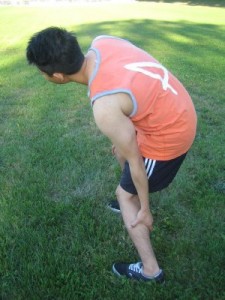Introduction
Leg cramps are a common and generally mild condition where the muscles in your leg unexpectedly become tight and sore. It regularly occurs in the calf muscles, though it can affect any part of your leg, including your thighs and feet. After the cramping has gone, you might have discomfort and tenderness in your leg for a few hours. Three out of four instances take place at night during sleep.
What Causes Leg Cramps?
Leg cramps can come about for no obvious reason, known as idiopathic leg cramps, or as a sign or complication of a health disorder, identified as secondary leg cramps.
Causes of secondary leg cramps can consist of:

- Pregnancy.
- Workout.
- Certain kinds of medicine
- Liver disease.
When to See Your GP
- Speak to your doctor if your leg cramps are affecting your quality of life; for instance, if you have recurrent leg cramps or they are disturbing your sleep.
- Your doctor will ask about your symptoms and inspect your legs and feet. They might also ask if you have other indications, such as numbness or inflammation, which might be a sign that you have secondary leg cramps caused by a primary health condition.
- In this instance, you might need additional tests, such as blood tests and urine tests, to rule out other illnesses.
Treating Leg Cramps
- Most instances of leg cramps can be treated by working out the affected muscles. Exercising your legs throughout the day will often help decrease how often you get cramps.
Stretches
- Medicine is generally only required in the most persistent cases where cramping does not react to exercise.
- If you have secondary leg cramps, treating the primary cause might help relieve your symptoms.
- Leg cramps that take place during pregnancy should pass once the baby is born.
- Treating cramps that take place as a result of severe liver disease can be more problematic. Your treatment plan might include using medicines such as muscle relaxants.
Preventing Leg Cramps
If you frequently get leg cramps, regularly extending the muscles in your lower legs might help avoid the cramps or decrease their frequency. You might find it worthwhile to stretch your calves before you go to bed every night.
The following night-time guidance may perhaps also help:
- If you lie on your back, make certain that your toes point up –placing a cushion on its side at the end of your bed, with your feet supported up against it might help keep your feet in the correct position.
- If you lie in a forward-facing position, suspend your feet over the end of the bed– this will keep your feet in a comfortable place and help prevent the muscles in your calves from constricting and tensing.
